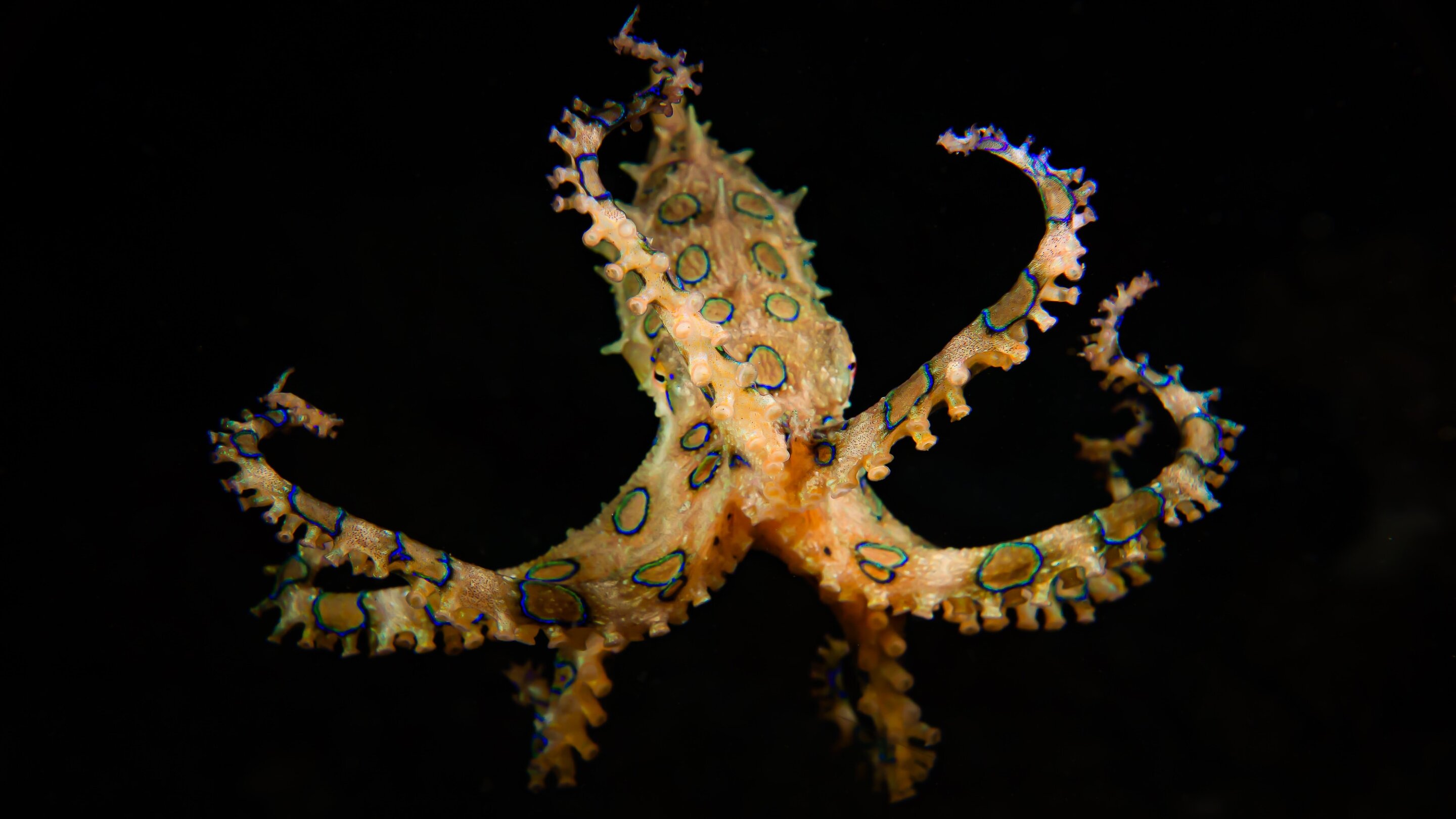With a split-second muscle contraction, the greater blue-ringed octopus can change the size and color of the namesake patterns on its skin for purposes of deception, camouflage and signaling. Researchers at the University of California, Irvine have drawn inspiration from this natural wonder to develop a technological platform with similar capabilities for use in a variety of fields, including the military, medicine, robotics and sustainable energy.
Hapalochlaena lunulata is a species of octopus native to the Western Pacific Ocean and Indian Ocean. It uses a neurotoxin venom to stun its prey and can ward off predators with a flash of its blue rings. These iridescent circles on a brown background on the creature’s skin are what drew the attention of the UCI researchers.
“We are fascinated by the mechanisms underpinning the blue-ringed octopus’ ability to rapidly switch its skin markings between hidden and exposed states,” said senior co-author Alon Gorodetsky, UCI professor of chemical and biomolecular engineering.
“For this project, we worked to mimic the octopus’ natural abilities with devices from unique materials we synthesized in our laboratory, and the result is an octopus-inspired deception and signaling system that is straightforward to fabricate, functions for a long time when operated continuously, and can even repair itself when damaged.”
The architecture of the innovation calls for a thin film consisting of wrinkled blue rings surrounding brown circles—much like those on the octopus—sandwiched between a topmost transparent proton-conducting electrode and an underlying acrylic membrane, with another identical electrode underneath.
2024-01-05 11:00:05
Link from phys.org rnrn
